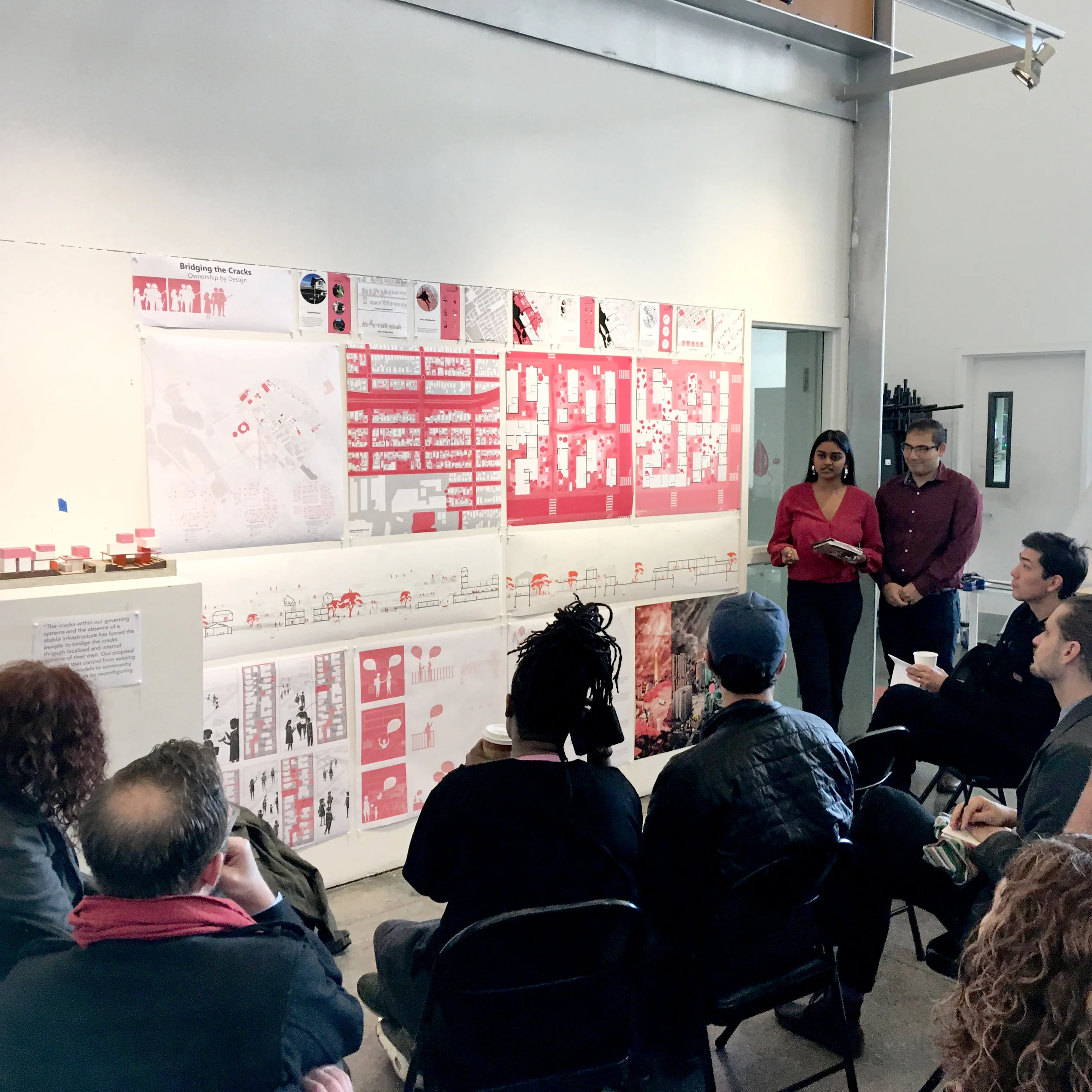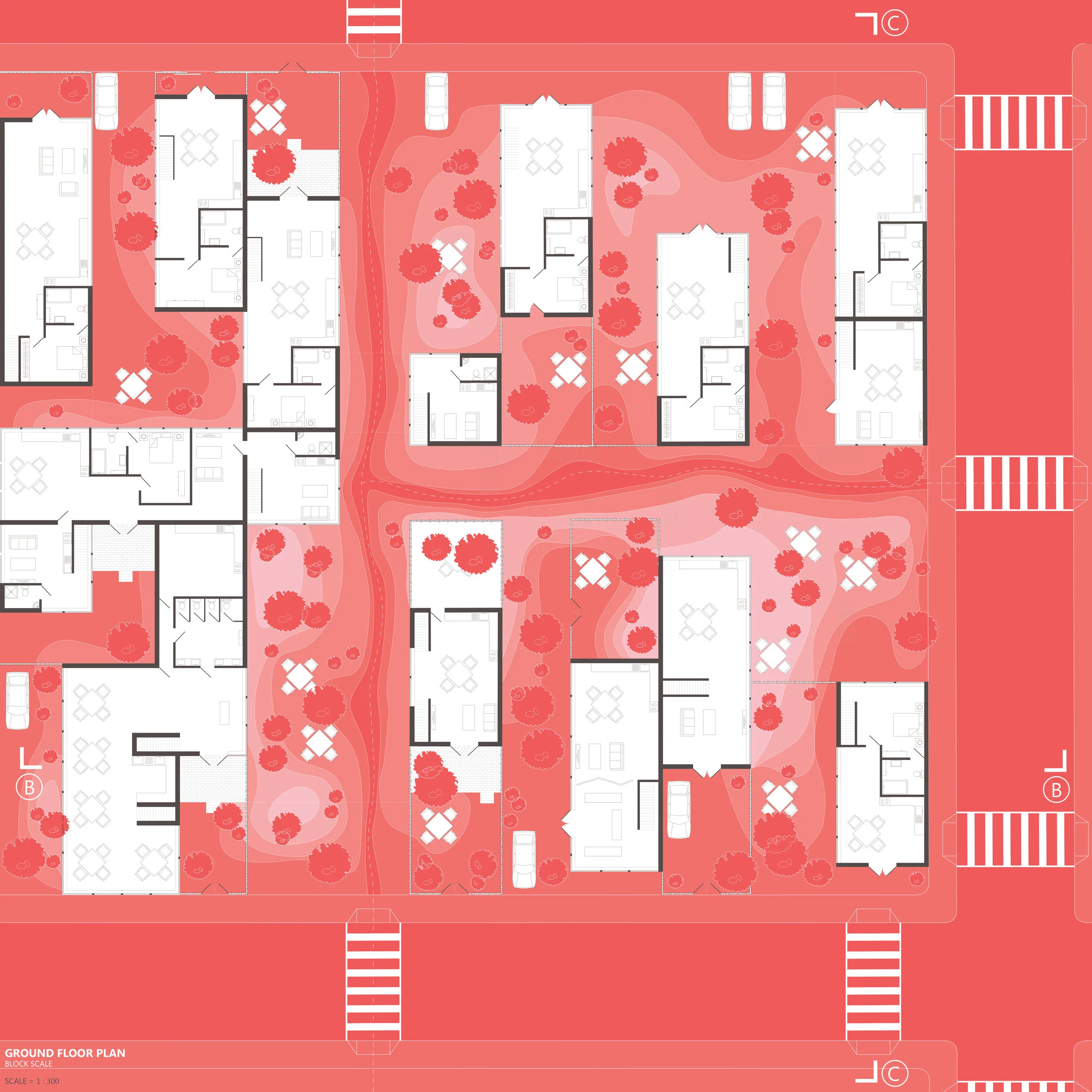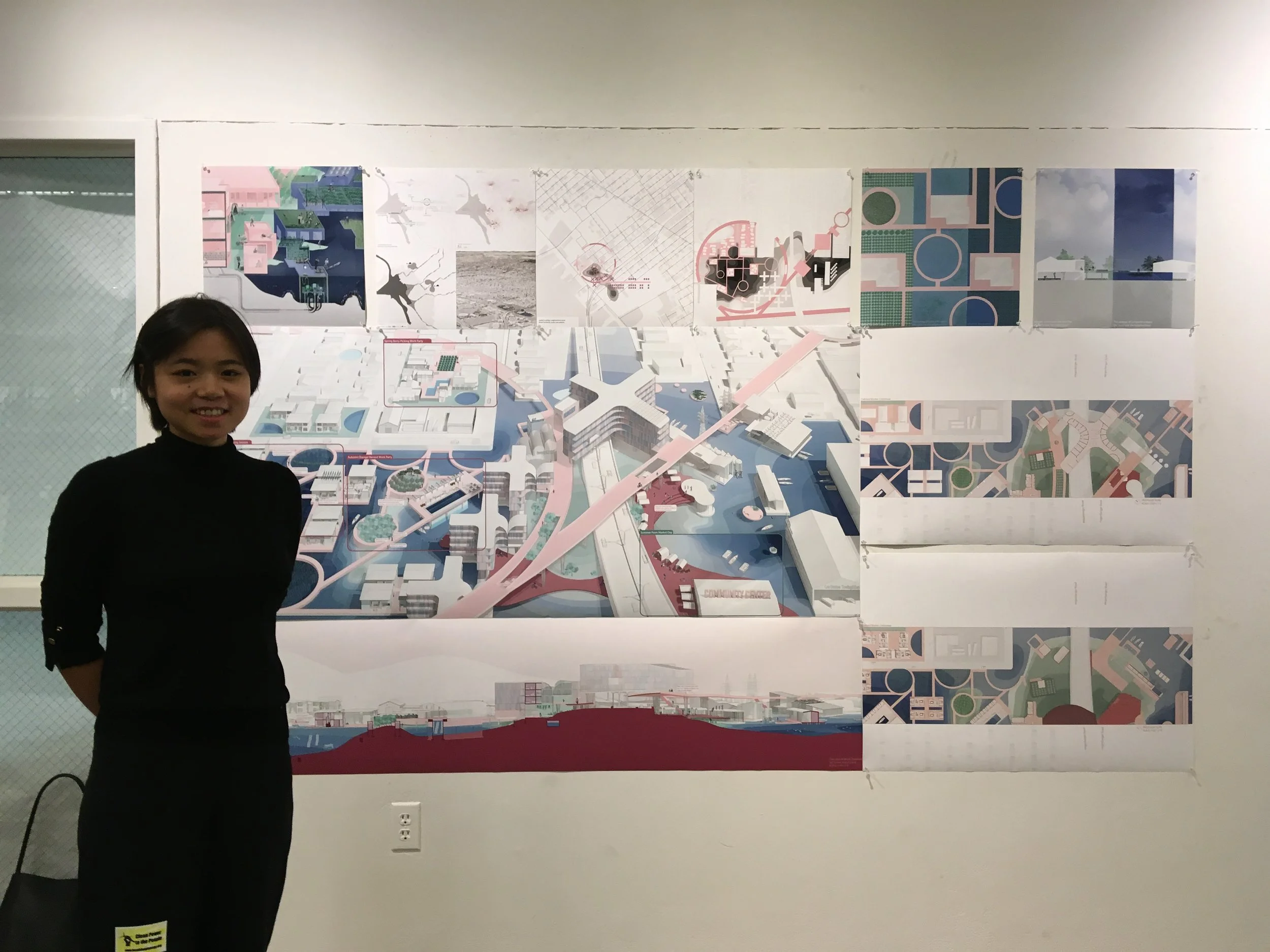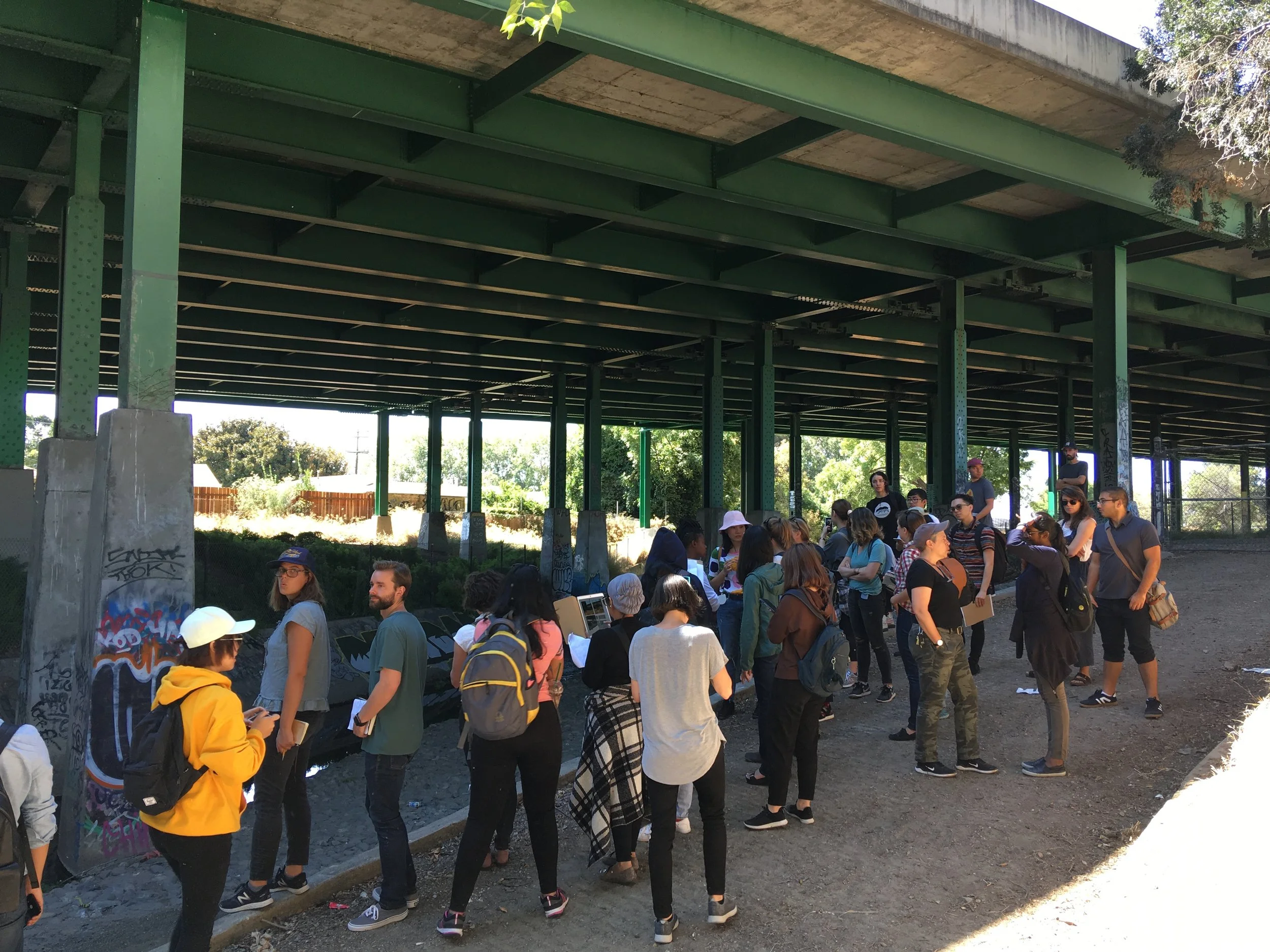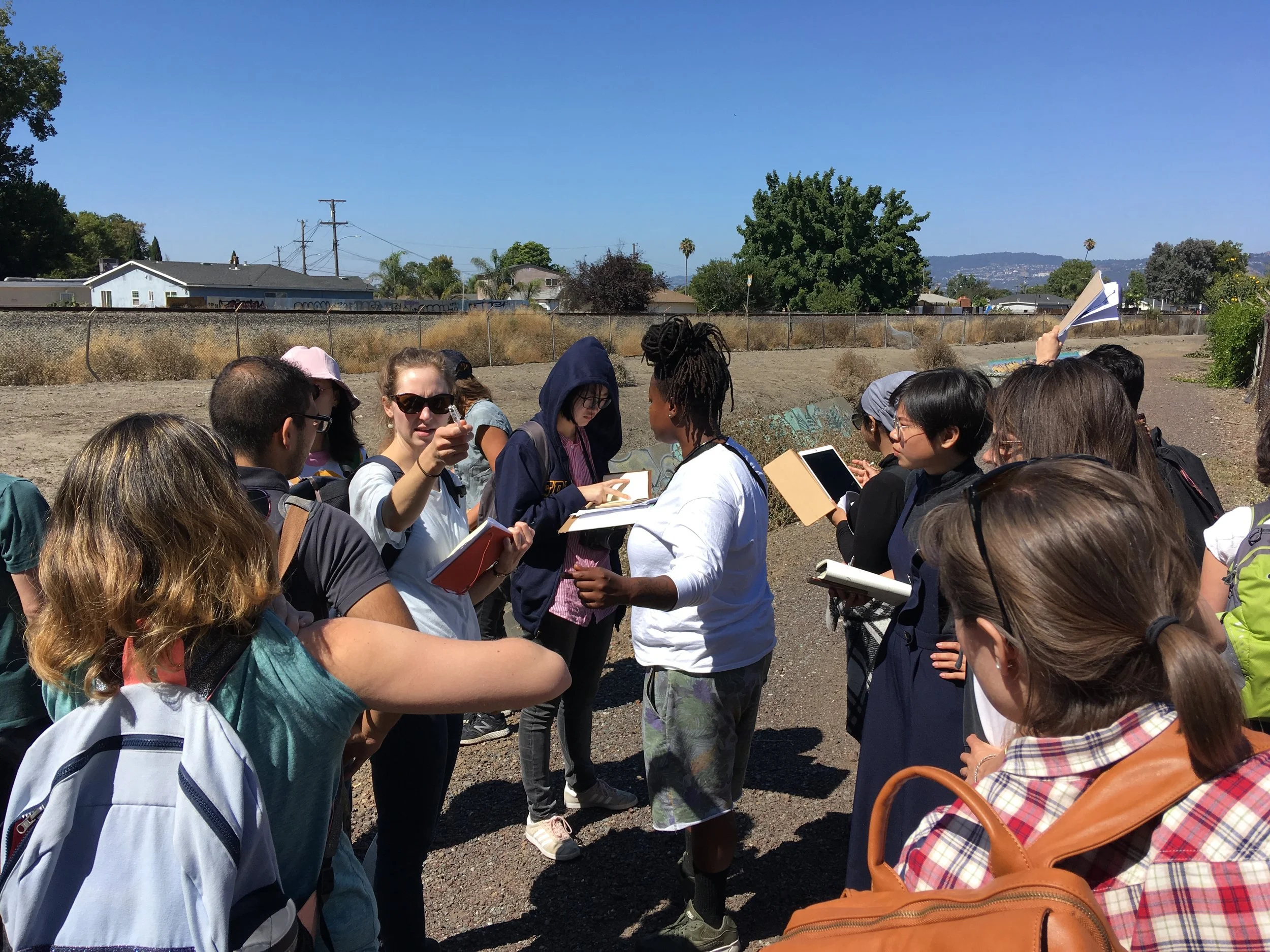STOP CALLING ME RESILIENT
Curriculum: Advanced Studio MAAD Urban Works, MArch and BArch
Date: Fall 2018, California College of the Arts, Architecture Division
Professor: Janette Kim
Students in this design studio asked how structural logics such as the ownership and management of land, access to resources like energy and water, and the social structure of households and communities can overlay onto the hydrological, biological and infrastructural challenges of sea level rise. The studio (named after a poster circulated around New Orleans after Hurricane Katrina) built on the findings of the All Bay Collective to develop design strategies that support social and racial equity in Deep East Oakland.
Projects. We will produce experimental research, master plans, and building designs in three phases.
1. Research: Modules and Mashups
Examine the potential impact of existing design strategies on economies, ecologies, communities and governance structures at multiple scales. Use mash-up techniques—from the logical to the surreal—to spark unexpected and complex design propositions.
2. Master Plan: Designing for Uncertainty
Create a master plan that proposes sea level rise mitigation infrastructures and doubles the existing square footage in a 3-5 block area. Revisit the history of urbanism in our field to test how such approaches might be transformed today.
3. Building Design: New Narratives
Zoom in to the scale of half of a city block to resolve programmatic and aesthetic design questions raised by your master plan. Make huge graphic narratives to imagine how your design might change over time.
Sites. We will focus on Deep East Oakland, with an eye for influences at a broader urban and regional scale (including the San Leandro Bay and the San Francisco Bay, as well as the San Leandro Creek and other watersheds). We will look at the following neighborhoods in East Oakland: Brookfield Village/Columbia Gardens, Coliseum/Rudsdale/ Lockwood/Havenscourt, Highland/Elmhurst, Sobrante Park, Stonehurst, and Melrose.
Design Methods. We will experiment with strategies for designing urban waterproofing techniques that can grow or change over time. We will examine how the hydrological and ecological demands of things like levees, wetland restoration and green infrastructure might overlap with more socially-driven questions of who owns them, maintains them, and benefits from such investments. We will see how these approaches relate to recent theories of urbanism—the megastructure, ‘bigness,’ subtraction, and acupunctural urbanism—and their implications for scales of inclusion. Then, to test how buildings can adapt to possible futures, through ideas like subtraction, flipping, retrofits, subdivision, and selective demolition.
Stop Calling Me Resilient was a Fall 2018 Advanced Studio taught by Assistant Professor Janette Kim, with MAAD, MArch and BArch students Shahad Alamoudi, Jiaqi (Freya) Cao, Georgina Gutierrez, Ricardo Hernandez-Perez, Yaroslava (Yasia) Krivokon, Tianran (Digby) Li, Jingyi (Emma) Luo, Kshitija (TJ) Nagarkar, Shweta Pingale, Taamara Rath, Jose Rodriguez, Zhongwei (Weiwei) Wang, Cera Yeo, Chuan (Charles) Zhu.


